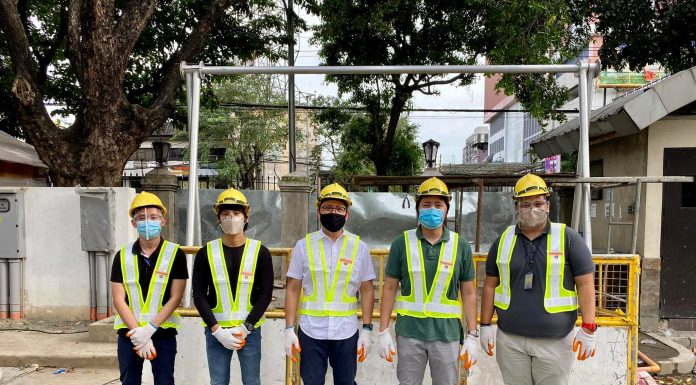 FOLLOWING recent developments in climate change talks and multilateral environment agreements in Paris last December, shouldn’t the Philippine government literally look for greener pastures and consider turning their attention from fancy hotel and shopping mall construction to more ecotourism?
FOLLOWING recent developments in climate change talks and multilateral environment agreements in Paris last December, shouldn’t the Philippine government literally look for greener pastures and consider turning their attention from fancy hotel and shopping mall construction to more ecotourism?
Three years after SM Baguio drew flak for cutting down trees to make way for a parking lot and it seems authorities are still in favor of concrete attractions over sustainable natural development.
Last year, while the nation was busy rejoicing over the visit of Pope Francis, the Court of Appeals finally granted the expansion project of SM to include a “sky park.” Environmental groups and Baguio residents were quick to file another petition stopping the project, this time backed by the Supreme Court thankfully.
The concrete-paving of the City of Pines is just one of the many incidences where tourism equates to infrastructure catering to the everyday consumer. Resorts in Boracay also got the ire of the public last year for continuing their operation despite the lack of environmental clearances. Glamorous underwater rooms and over-looking hotel views may not be all that enticing once you find out the destruction it has caused natural areas and preserved beaches. Thus the battle of building permits.
While private corporations claim that the local government has allowed them to operate, persons in position pass the blame to the Department of Environment and Natural Resources, which appears lax in inspecting tourist accommodations and leisure infrastructures to determine whether they comply with the law.
If there is the difficulty of putting up billions-worth resort hotels only to be taken down once the paper works turn out to be muddy, then why are we avoiding going back to basics to good old camping, trekking, diving, and other forms of tourism that do not ruin Mother Earth?
Despite the strong stance made by the country during the United Nations climate talk in France, advocating the limit of the world’s warming to 1.5 degrees Celsius and the Office of the Presidential Adviser for Environmental Protection pushing for stricter measures in urban planning and green building standards, traditional tourism which usually entails a build-and-go mentality in terms of infrastructure, still wins.
As usual, the greener option takes the backseat.
Asian Institute of Management professor Fernando Roxas said in an article released by the Yale School of Management that Philippine government support for ecotourism is still “far from optimum.”
Of course, the more obvious path to economic stimulation would be big shopping centers and world-class hotel and leisure areas. Never mind the trees uprooted and the dangers of landslides and other environmental disasters as long as there is a luxury commercial structure near the tourist spot.
What the government and the private sector fail to consider is that with ecotourism, there is less investment needed for infrastructure development since the main focus is the natural scenery and the different activities that are unique to the place.
According to Roxas, with the Philippines’ 7,107 islands, many of which untouched, there is potential for ecotourism to lure in more travelers.
Palawan and Puerto Galera are already making their mark when it comes to non-traditional tourism with activities like snorkeling, diving and mountain climbing. Palawan’s famous Tubbataha Reef is a haven for underwater photographers and divers while Puerto Galera, named one of the most beautiful bays in the world, boasts of an music and arts festival mounted yearly on Mt. Malasimbo.
Pinoy pop culture also served Mountain Province well as the movie “That Thing Called Tadhana” paved the way for more attention in the small municipality of Sagada.
Camping out in Mt. Kiltepan will have you a front-row seat to a cinematic sunrise. For the history buffs, Bohol offers a wide selection of old churches dating back to the Spanish colonization period.
If only there are more efforts in marketing these pristine places in the Philippines, then perhaps ecological concerns and climate change threats won’t be as bad and we will not have to depend on sky-rise hotels to gain attention.
It is ironic and embarrassing to think that foreign nationals and international organizations like French organizations d’Aboville Foundation and Noé Conservation are the ones leading the pack when it comes to preserving the country’s natural endowments. While the men upstairs are busy giving permits to profiteering developers to build the next posh resort or shopping mall, other small-time tourism enthusiasts and stakeholders are working themselves to the bone trying to get support for natural attractions that are underrated but a breath of fresh air for the tourism industry.













